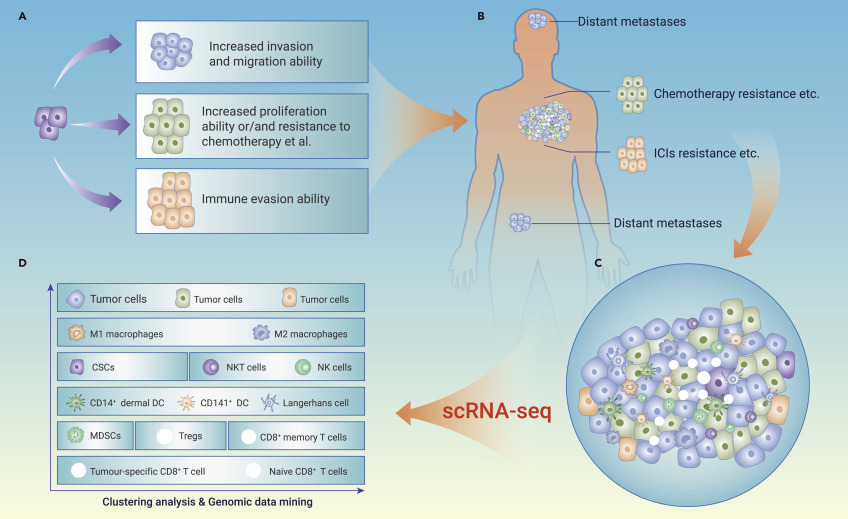Exploring the Frontier of Single-Cell Analysis Techniques

Science
Single-cell analysis techniques represent a
ground-breaking frontier in biomedical research, allowing for the interrogation
of individual cells with unprecedented resolution and sensitivity. By
dissecting the heterogeneity within cellular populations, these techniques
unveil insights into cellular function, disease mechanisms, and therapeutic
responses that were previously obscured by bulk analyses. In this comprehensive
report, we delve into the principles of single-cell analysis, explore
cutting-edge methodologies, highlight applications across diverse fields, address
ethical considerations, confront challenges, and chart future directions.

Single-cell technologies
Principles
of Single-Cell Analysis
Single-cell analysis techniques are underpinned by several key principles:
Cell Isolation and Capture: Single-cell analysis begins with the isolation and capture of individual cells from complex biological samples. Techniques such as fluorescence-activated cell sorting (FACS), microfluidics-based sorting, and laser capture micro dissection (LCM) enable the precise isolation of single cells while preserving their molecular integrity.
Single-Cell Genomics: Single-cell genomics techniques, including single-cell RNA sequencing (scRNA-seq), single-cell DNA sequencing (scDNA-seq), and single-cell ATAC sequencing (scATAC-seq), provide a snapshot of the genomic landscape within individual cells. These approaches offer insights into gene expression profiles, genetic mutations, chromatin accessibility, and epigenetic modifications at the single-cell level.
Single-Cell
Proteomics and Metabolomics: Complementary to
genomics, single-cell proteomics and metabolomics techniques enable the
quantification of proteins and metabolites within individual cells. Mass
cytometry (CyTOF), single-cell western blotting, and single-cell mass
spectrometry (SCMS) allow for the characterization of protein expression
patterns, post-translational modifications, and metabolic pathways at the
single-cell resolution.
Advanced
Single-Cell Analysis Methodologies
A plethora of advanced methodologies has been developed to enable comprehensive single-cell analysis:
Single-Cell Sequencing Technologies: Next-generation sequencing (NGS)-based approaches, such as droplet-based methods (e.g., Drop-seq, 10x Genomics) and plate-based methods (e.g., Smart-seq, CEL-Seq), enable high-throughput profiling of gene expression in individual cells. These techniques leverage microfluidics platforms and barcoding strategies to capture transcriptomes from thousands to millions of single cells simultaneously.
Spatial Transcriptomics and Imaging: Spatially resolved transcriptomics techniques, including spatially resolved transcript amplicon readout mapping (STARmap), spatially resolved transcript amplicon sequencing (STARseq), and spatial transcriptomics (ST) technologies, provide spatial context to gene expression patterns within tissues and organs. These approaches integrate RNA sequencing with imaging modalities, allowing for the visualization of gene expression profiles at single-cell resolution within intact tissues.
Multiplexed
Protein Detection: Multiplexed protein detection
techniques, such as multiplexed immunofluorescence (MxIF), multiplexed ion beam
imaging (MIBI), and imaging mass cytometry (IMC), enable simultaneous detection
of multiple proteins within individual cells or tissue sections. These methods
leverage antibody-based labeling and mass spectrometry detection to quantify
protein expression and spatial distribution with high multiplexing capacity and
spatial resolution.
Applications
of Single-Cell Analysis
Single-cell analysis techniques find applications across diverse fields, including:
Cancer Biology: Single-cell analysis of tumors elucidates intra-tumoral heterogeneity, clonal evolution, and immune cell interactions within the tumor microenvironment. These insights inform cancer diagnosis, prognostication, and treatment strategies, including targeted therapies and immunotherapies tailored to individual patients based on their tumor's molecular profile.
Neuroscience: Single-cell analysis techniques unravel the cellular diversity, connectivity, and functional states of neuronal populations in the brain. These approaches shed light on neurodevelopmental processes, neuronal circuits, and disease mechanisms underlying neurological disorders such as Alzheimer's disease, Parkinson's disease, and schizophrenia.
Developmental Biology: Single-cell analysis of embryonic development elucidates the dynamics of cell fate determination, lineage specification, and morphogenetic processes during embryogenesis. These studies provide insights into the molecular mechanisms governing tissue patterning, organogenesis, and regeneration, with implications for regenerative medicine and developmental disorders.
Immunology: Single-cell analysis of the immune system delineates immune cell heterogeneity, activation states, and immune responses to pathogens or vaccines. These insights inform the development of immunotherapies, vaccines, and precision medicine approaches for infectious diseases, autoimmune disorders, and cancer immunotherapy.
Stem
Cell Biology: Single-cell analysis of stem cells
elucidates stem cell heterogeneity, differentiation trajectories, and lineage
commitment in development and tissue regeneration. These studies facilitate the
identification of stem cell markers, lineage-specific regulators, and niche
factors governing stem cell fate decisions, with implications for regenerative
medicine and cell-based therapies.
Ethical
Considerations
While single-cell analysis techniques offer unprecedented insights into cellular biology and disease mechanisms, they also raise ethical considerations:
Informed Consent and Privacy: Obtaining informed consent for the use of human samples in single-cell research is paramount to ensuring respect for patient autonomy and privacy. Researchers must adhere to ethical guidelines and regulatory frameworks governing the use of human subjects' data and biological materials, safeguarding patient confidentiality and privacy rights.
Data Sharing and Open Science: Promoting data sharing and open science practices facilitates transparency, reproducibility, and collaborative research in single-cell analysis. However, concerns regarding data privacy, intellectual property rights, and fair credit attribution must be addressed to balance the benefits of data sharing with the protection of researchers' interests and contributions.
Dual-Use
Research: Single-cell analysis techniques have the
potential for dual-use applications, including biodefense, forensics, and
surveillance. Ethical considerations surrounding the responsible conduct of research,
biosafety, and biosecurity measures are essential to mitigate the risks of
misuse or unintended consequences arising from single-cell research.
Challenges
and Future Directions
Despite the transformative potential of single-cell analysis techniques, several challenges must be addressed to realize their full impact:
Data Analysis and Interpretation: Analyzing and interpreting complex single-cell datasets pose challenges related to data integration, noise reduction, and statistical inference. Developing robust computational algorithms, bioinformatics pipelines, and data visualization tools tailored to single-cell data analysis is essential to extract meaningful insights from high-dimensional datasets.
Experimental Validation and Reproducibility: Validating findings from single-cell studies requires rigorous experimental validation and reproducibility across different experimental conditions and biological contexts. Standardizing experimental protocols, benchmarking datasets, and sharing validated reagents and protocols facilitate cross-validation and reproducibility of single-cell findings.
Technological Advancements: Continuous innovation in single-cell analysis technologies is needed to address limitations in throughput, sensitivity, and spatial resolution. Advancements in microfluidics, imaging modalities, and multiplexed detection methods enhance the scalability, resolution, and multiplexing capacity of single-cell analysis techniques, enabling comprehensive characterization of cellular heterogeneity and interactions.
Clinical
Translation and Biomarker Discovery: Translating
single-cell research findings into clinical applications requires validation in
clinical cohorts, biomarker discovery, and clinical validation studies.
Collaborative efforts between academia, industry, and healthcare providers are
essential to bridge the gap between basic research and clinical implementation,
accelerating the translation of single-cell insights into diagnostic and
therapeutic applications.
Editor’s
Thoughts:
Single-cell analysis techniques have transformed our understanding of cellular biology, disease mechanisms, and therapeutic responses, offering unprecedented insights into the complexity and heterogeneity of biological systems. By dissecting cellular diversity at the single-cell resolution, these techniques have far-reaching applications across diverse fields, including cancer biology, neuroscience, developmental biology, immunology, and stem cell biology. Despite the prevailing challenges in data analysis, experimental validation, technological advancements, and clinical translation, the future of single-cell analysis is bright, with the potential to revolutionize biomedical research and advance personalized medicine.


